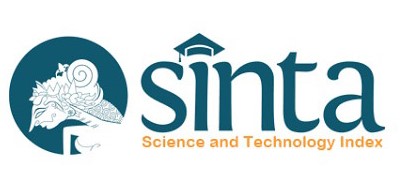Dexmedetomidine as an Ambulatory Sedation Agent for Abdominal MRI in Patients with Suspected Pheochromocytoma
Abstract
Background: Pheochromocytoma is a vascular tumor of chromaffin tissue, most commonly at the adrenal medulla, that produces and secretes norepinephrine and epinephrine and is a tumor that secretes catecholamines. Magnetic resonance imaging (MRI) is often used to provide clinical data and remains challenging in pediatrics. We present anesthesia management for abdominal MRI in pediatric patients with suspected pheochromocytoma.
Case: A 12-year-old child weighing 25 kg with a diagnosis of suspected pheochromocytoma will have an abdominal MRI for diagnosis with sedation. Intravenous sedation technique using dexmedetomidine loading dose 50 μg for 10 minutes and continued maintenance of dexmedetomidine dose 17.5 μg/hour. Durante's MRI showed stable hemodynamics. Post-MRI of the abdomen, monitoring, and evaluation were carried out in the conscious recovery room and found no complications.
Conclusion: The use of dexmedetomidine as a sedation agent in patients with suspected pheochromocytoma generally shows stable hemodynamics in the absence of signs of catecholamine spikes.
Keywords
Full Text:
PDFReferences
Butterworth JF, Mackey DC, Wasnick JD. Morgan & Mikhail’s Clinical Anesthesiology, 6th edition. New York: Mc Graw Hill Education: 2018
Gupta B, Lalit G. Kamna K. Anesthesia Considerations for Pheochromocytoma. International Research Journal of Pharmacy and Medical Sciences. 2018;1(1): 29-33.
Pani N, Jana T, Mohanty R, et al. Pheochromocytoma: Anaesthetic Challenges. Orissa Medical Journal. 2016; 36(1):62-67.
Pacak K. Preoperative management of the pheochromocytoma patient. J Clin Endocrinol Metab. 2007;92(11):4069-4079. doi:10.1210/jc.2007-1720
Kim DD, Matsui C, Gozzani JY, Mathias LAST. Pheochromocytoma Anesthetic Management. OJAnes. 2013;3:152-155.
Shailaja S, Ray A, Ray S, Kirubakaran R. Dexmedetomidine for procedural sedation in children. Cochrane Database Syst Rev. 2017; 2017(2):CD010886. doi:10.1002/14651858.CD010886.pub2
Jung S. Drug selection for sedation and general anesthesia in children undergoing ambulatory magnetic resonance imaging Yeungnam Univ J Med. 2020;37(3):159-168.
Lei H, Chao L, Miao T, et al. Serious airway-related adverse events with sevoflurane anesthesia via facemask for magnetic resonance imaging in 7129 pediatric patients: A retrospective study. Paediatr Anaesth.2019;29(6):635-639. doi:10.1111/pan.13601
Flood P, Rathmell JP, Shafer S. Stoelting’s Pharmacology and Physiology in Anesthetic Practice, 5th edition. United States of America : Walters Kluwer; 2015,
Davis PJ, Cladis FP, Motoyama EK. Smith’s Anesthesia for infants and children, 8th edition. United States of America: Elsevier; 2011
Dean B Andropulous, George A. Gregory. Gregory’s Pediatric Anesthesia, Sixth edition. United States of America; 2020
Lee S. Dexmedetomidine: present and future directions. Korean J Anesthesiol. 2019;72(4):323-330. doi:10.4097/kja.19259
Suprobo GP, Yupono K, Vitraludyono R. The use of dexmedetomidine on pediatrics undergoing magnetic resonance imaging (MRI) examination. Journal of Anaesthesia and Pain. 2021:2(2):76-81. doi:10.21776/ub.jap.2021.002.02.05
DOI: http://dx.doi.org/10.21776/ub.jap.2024.005.01.04
Refbacks
- There are currently no refbacks.

This work is licensed under a Creative Commons Attribution 4.0 International License.









.png)

